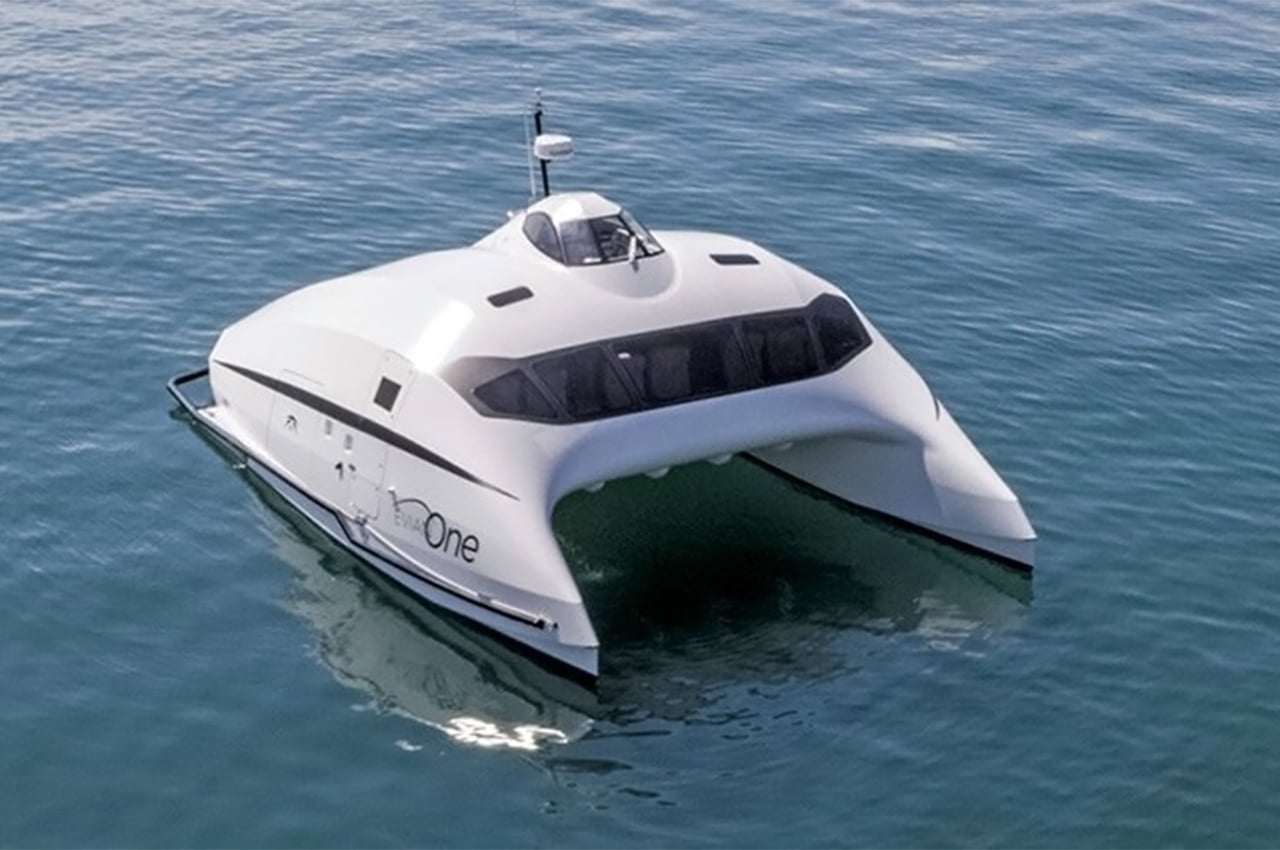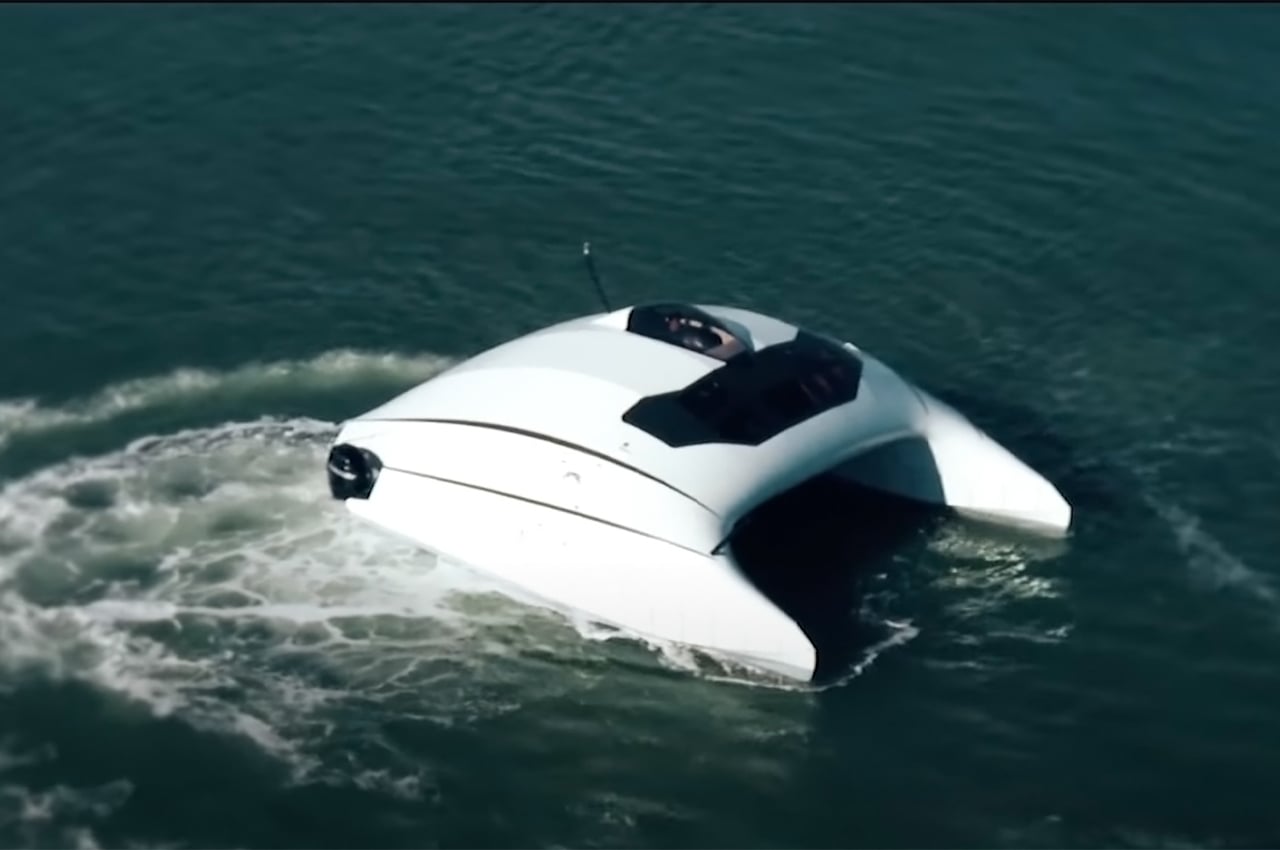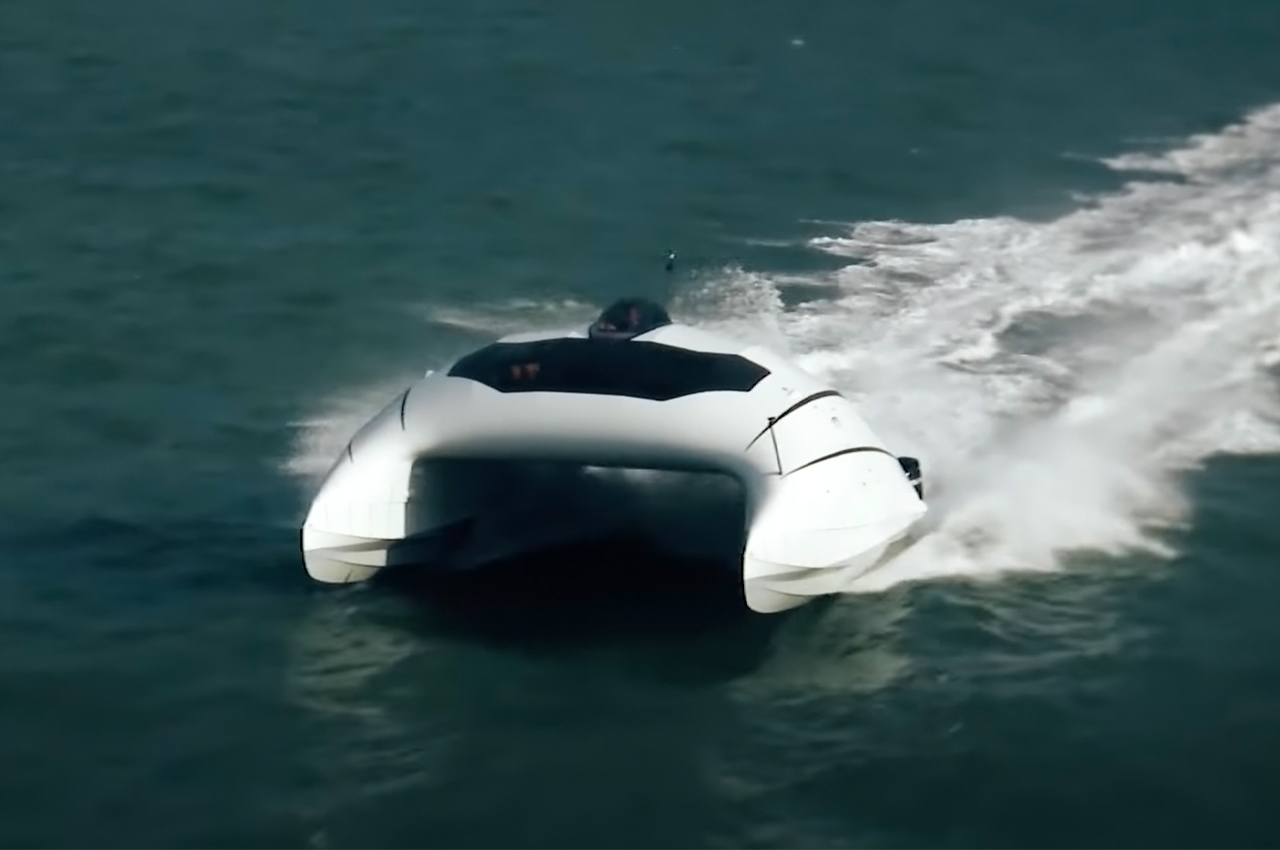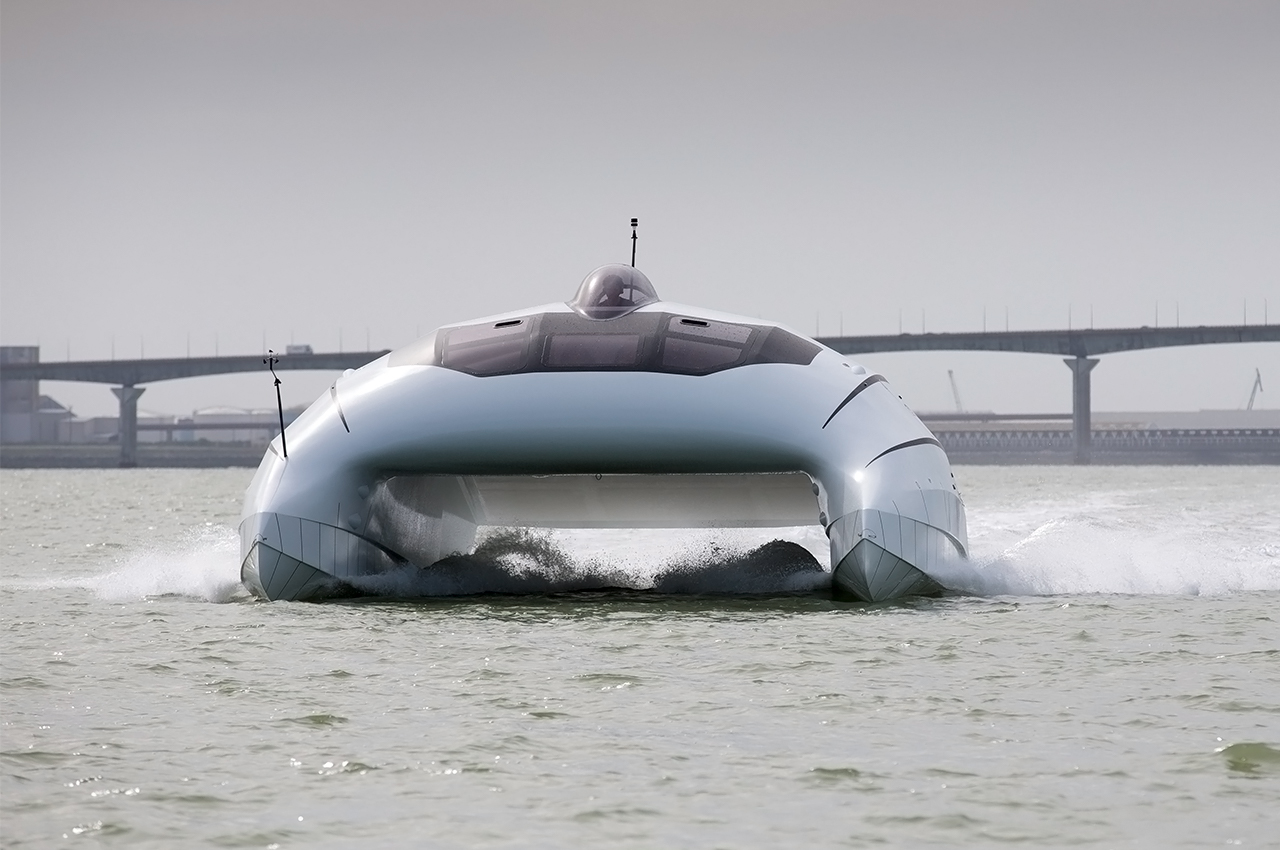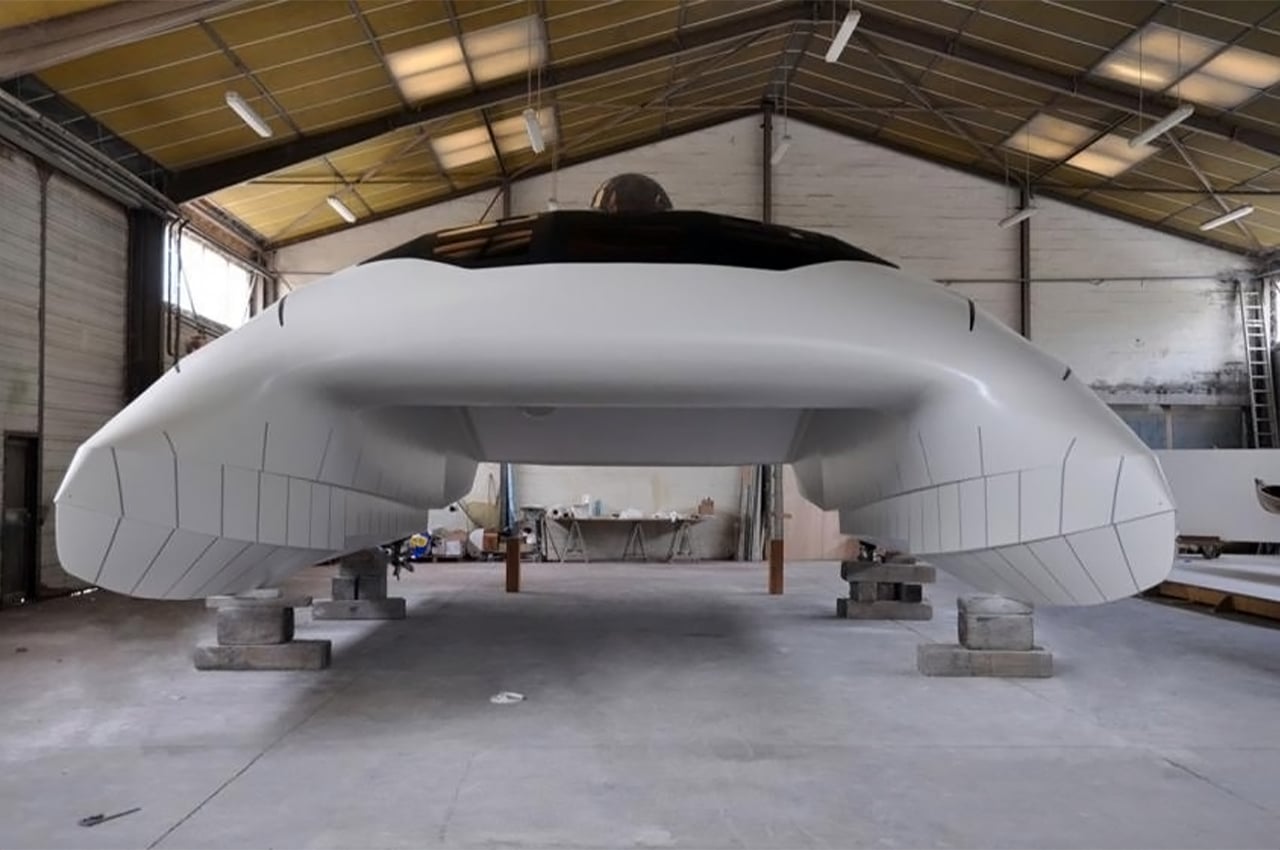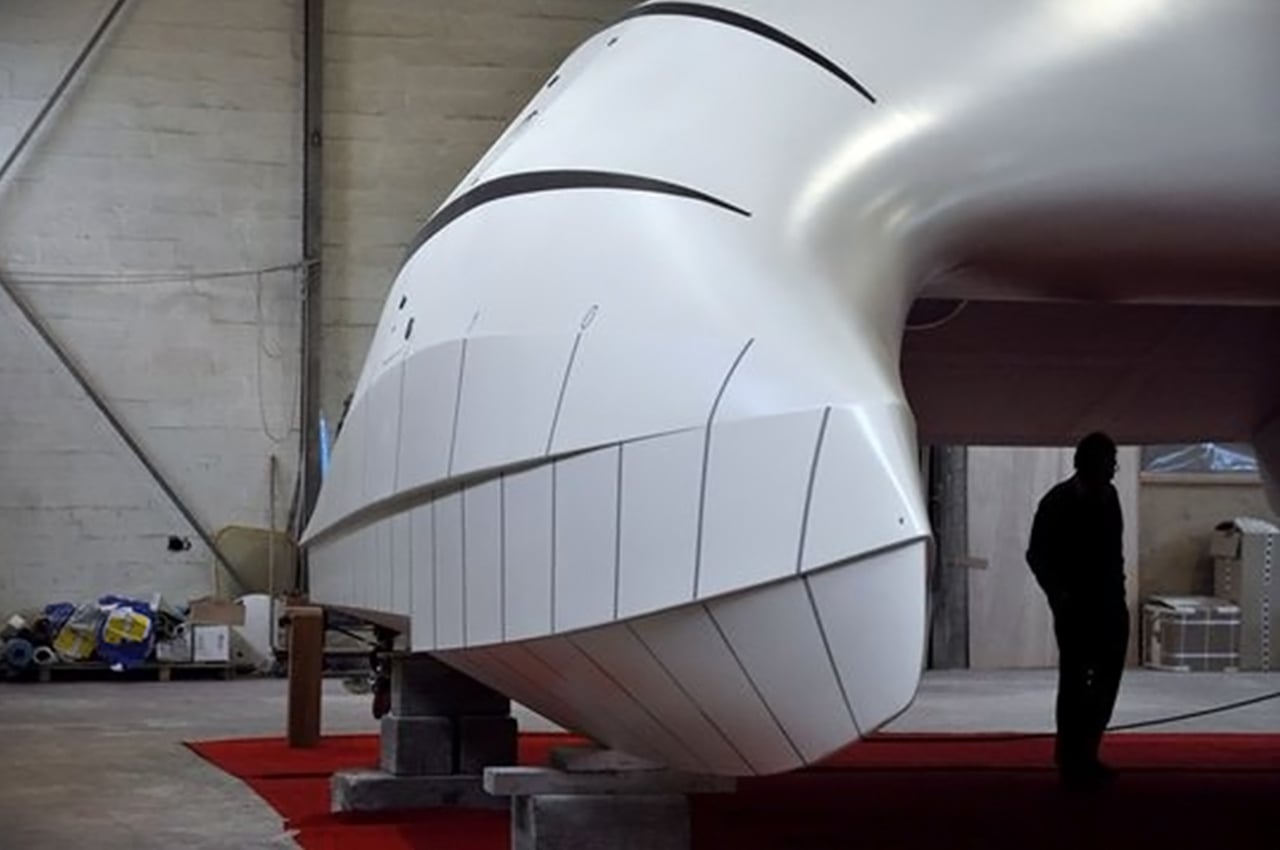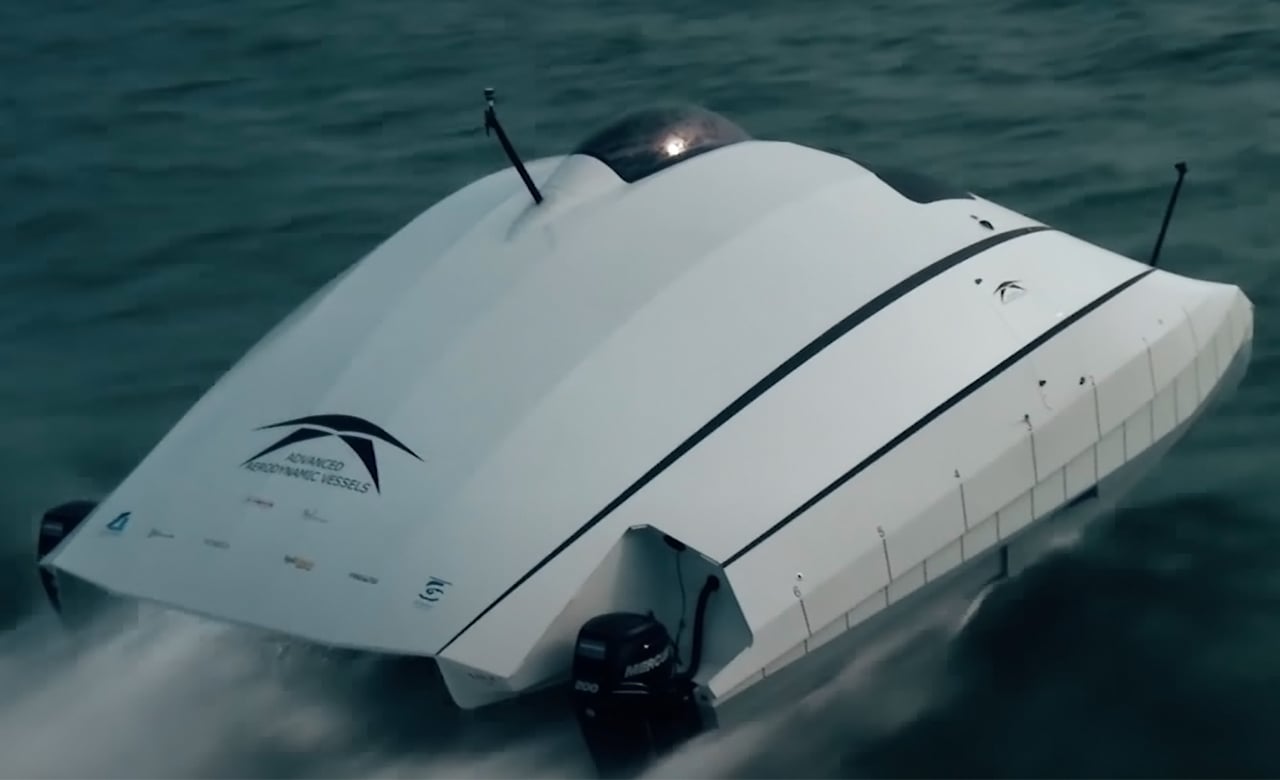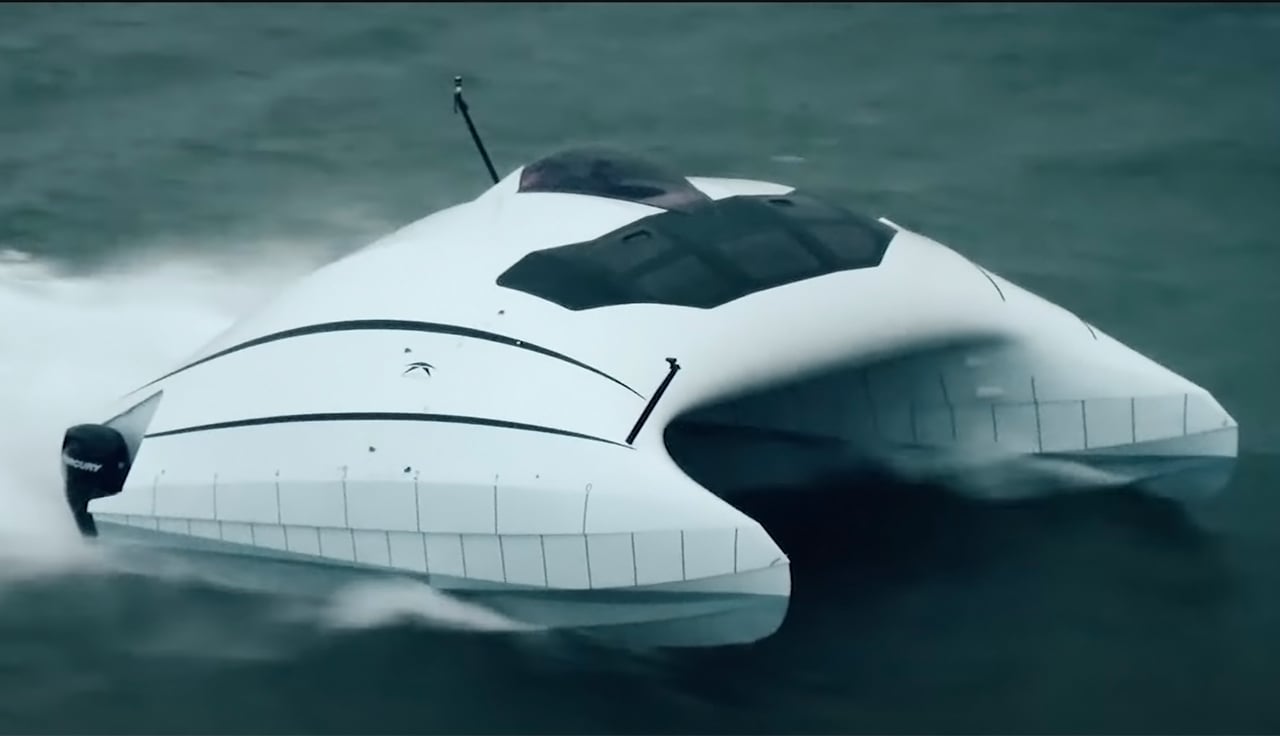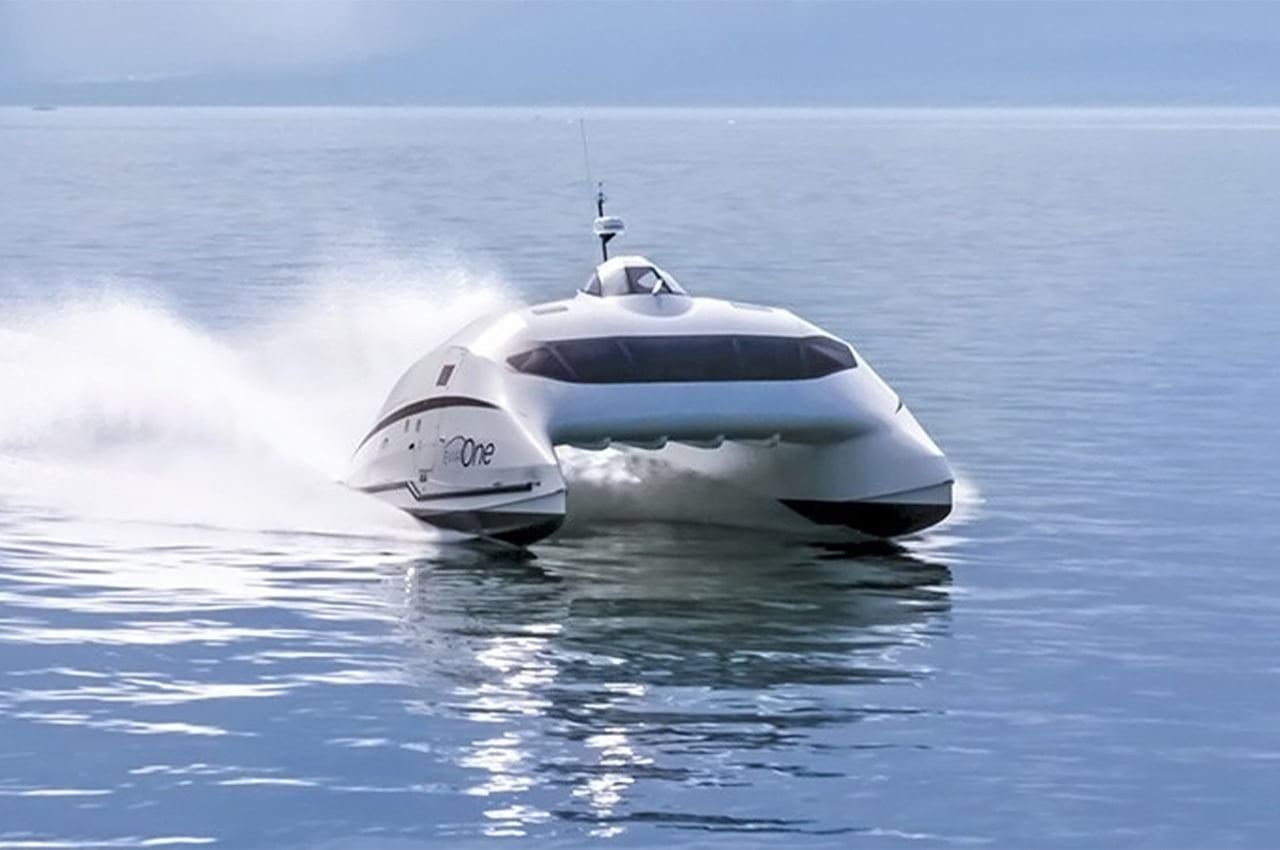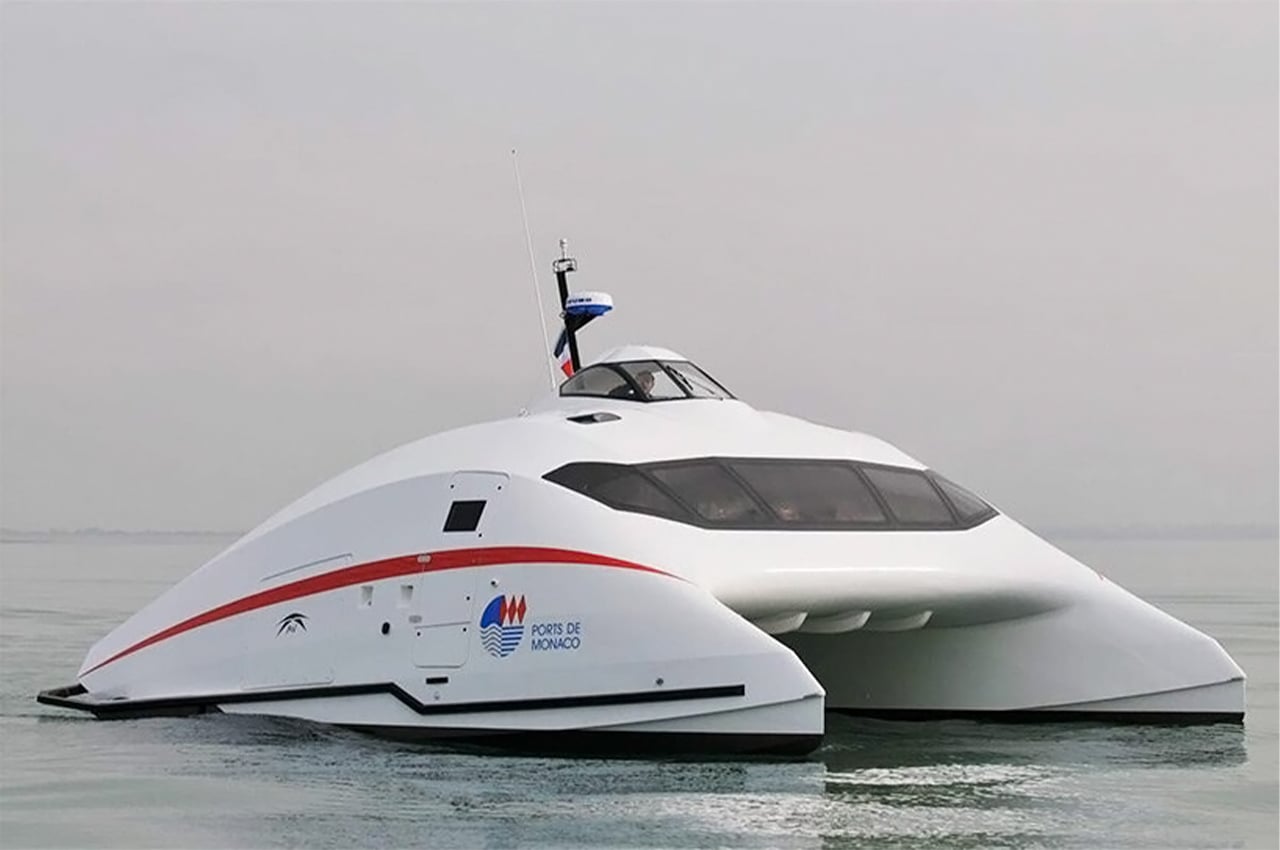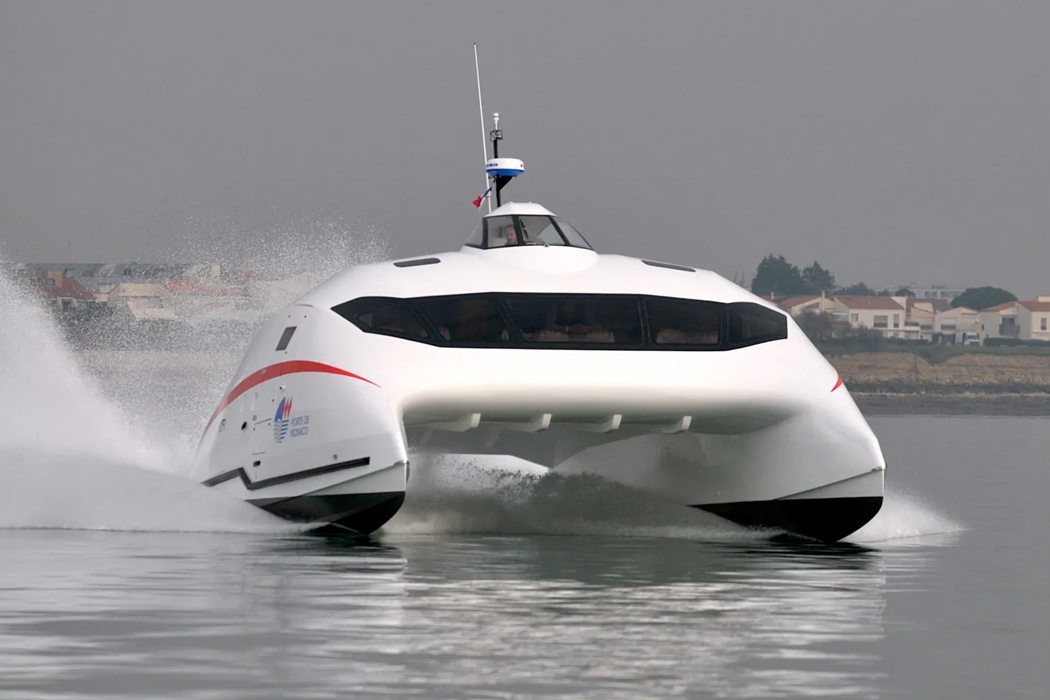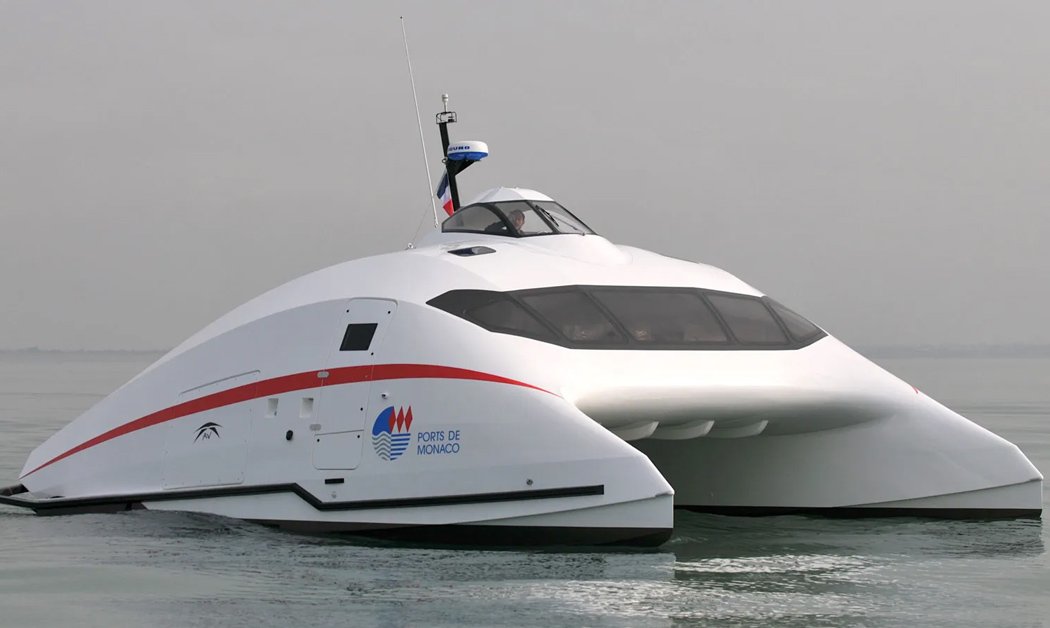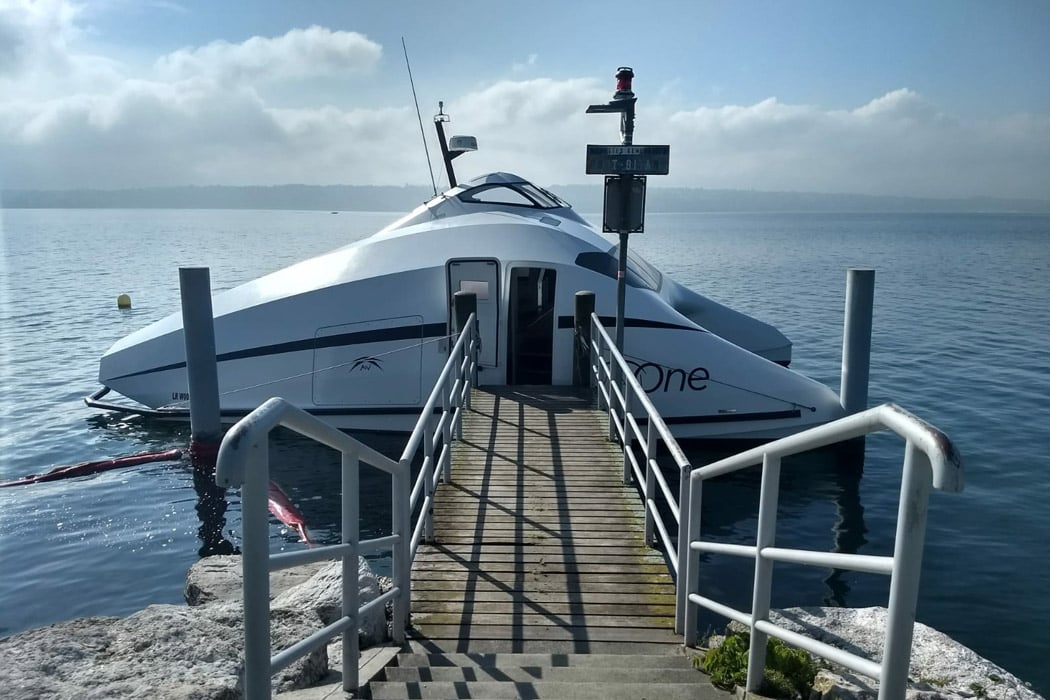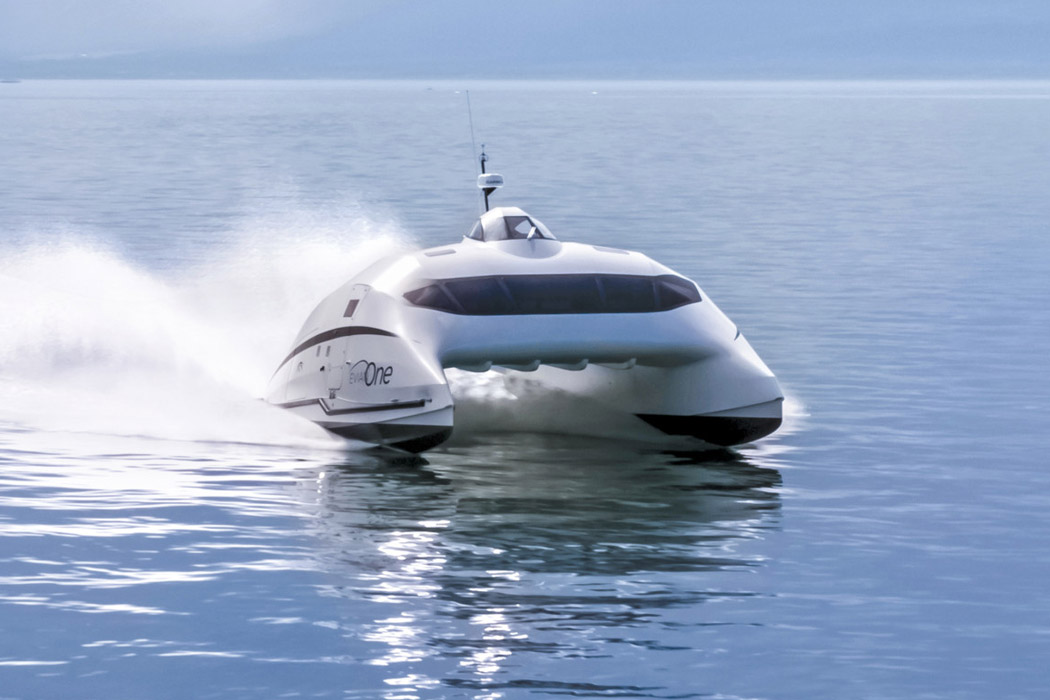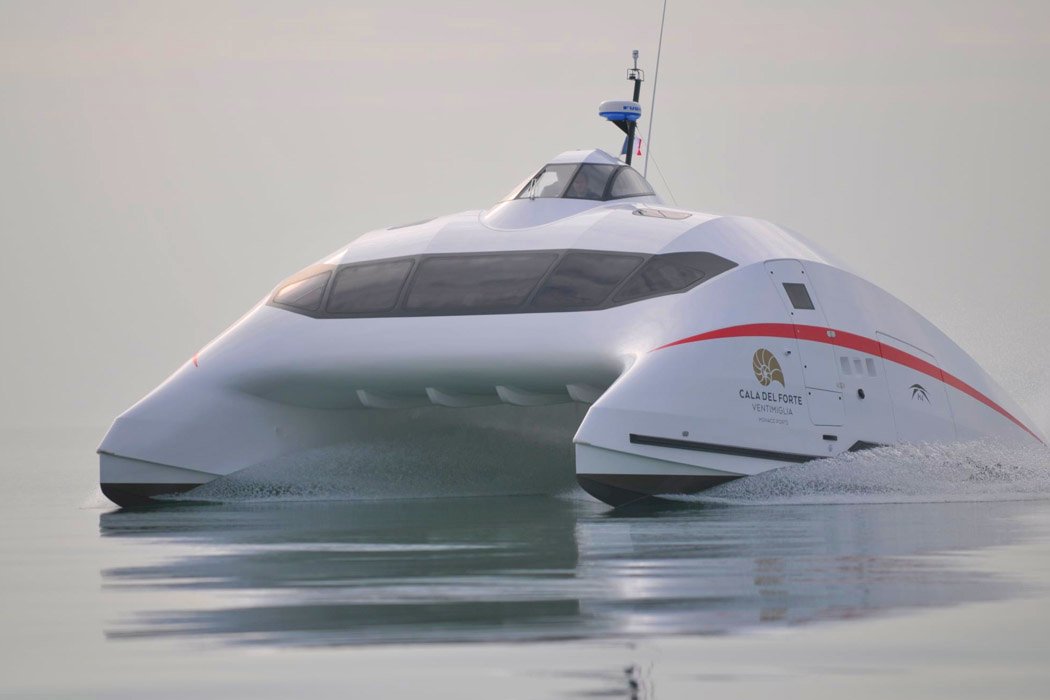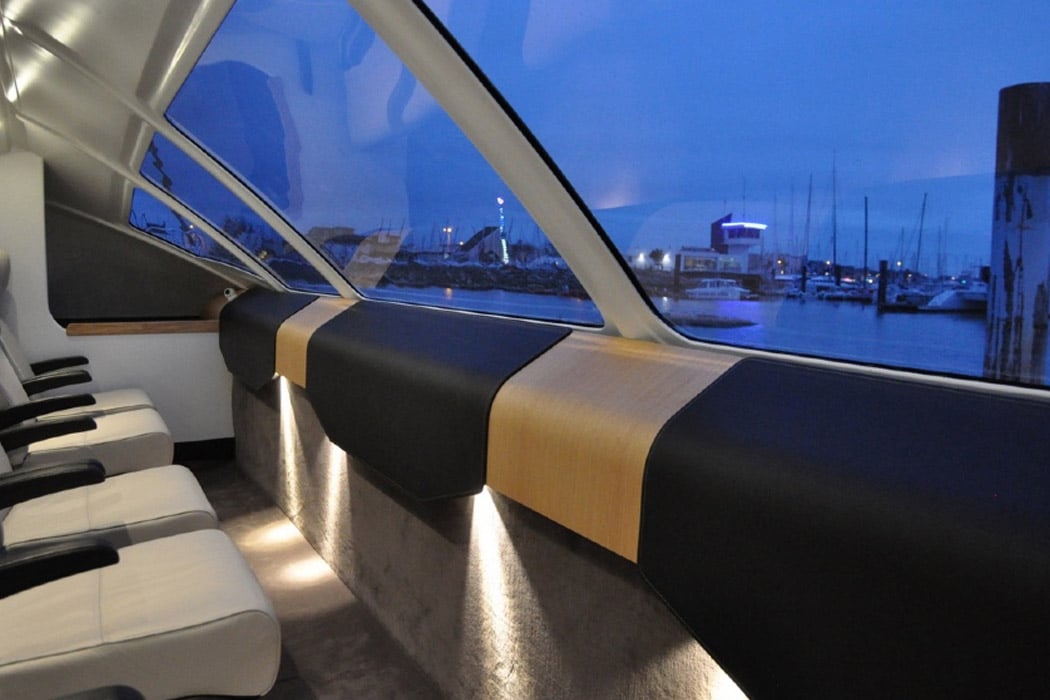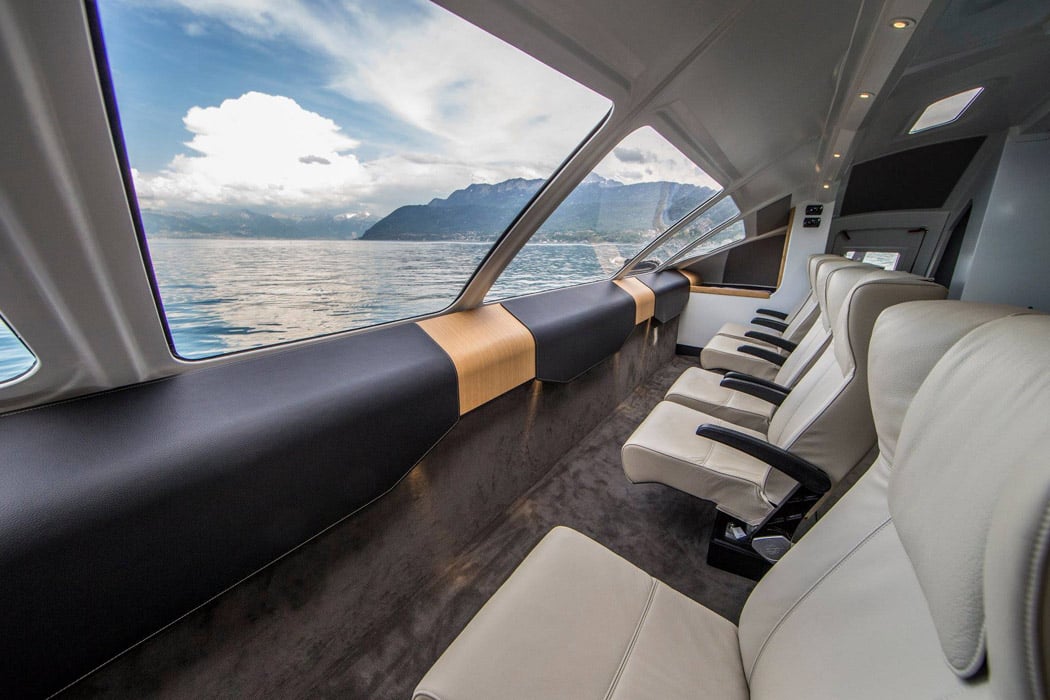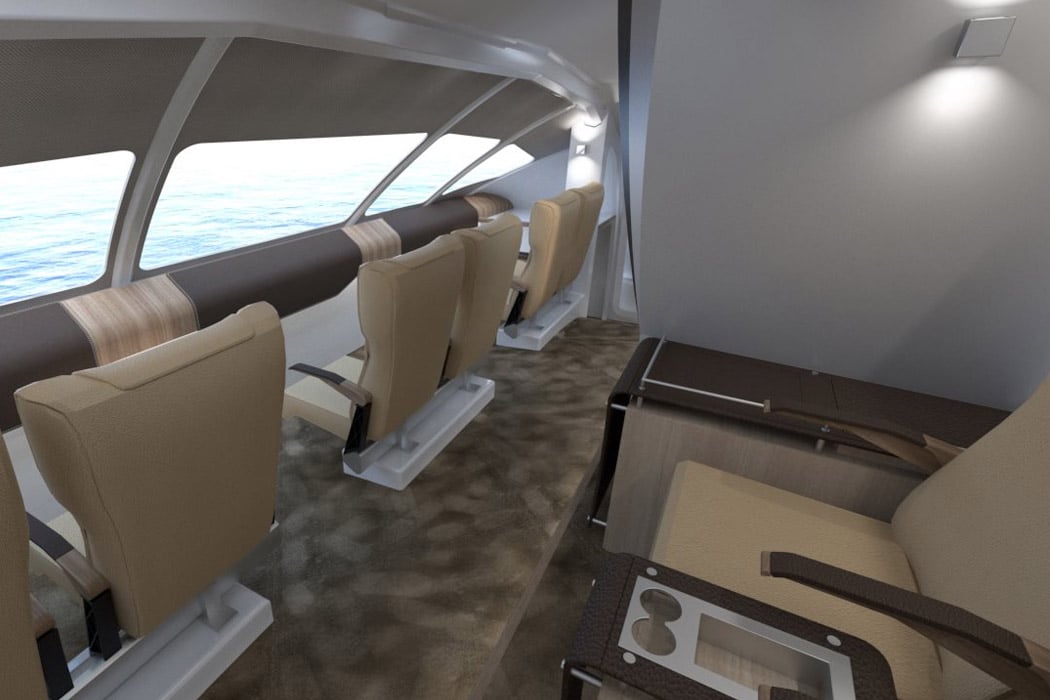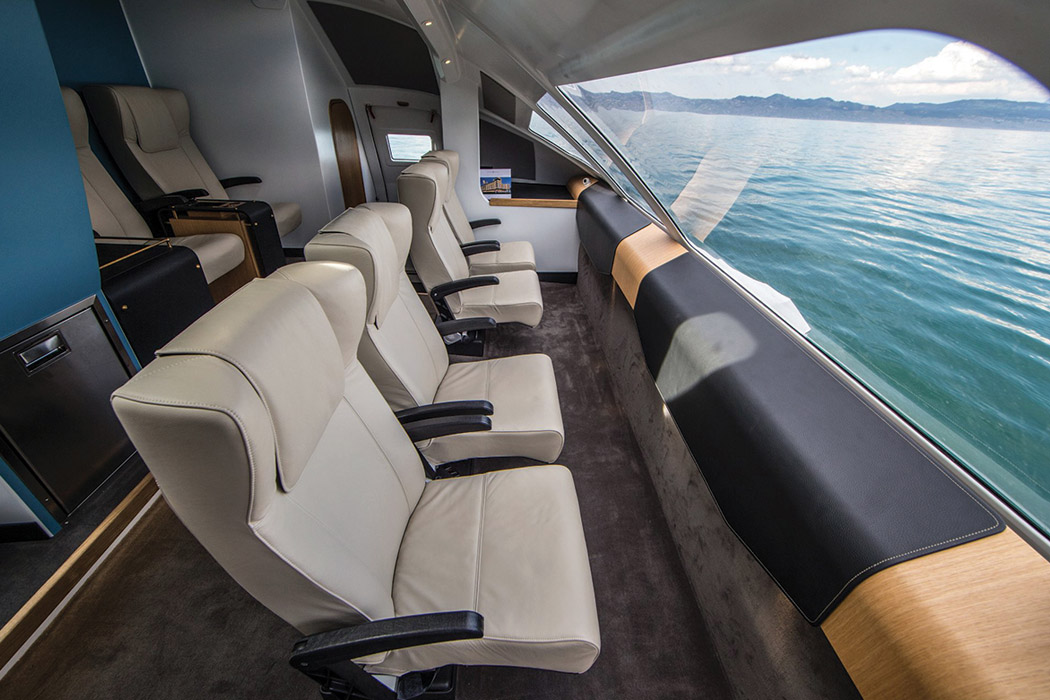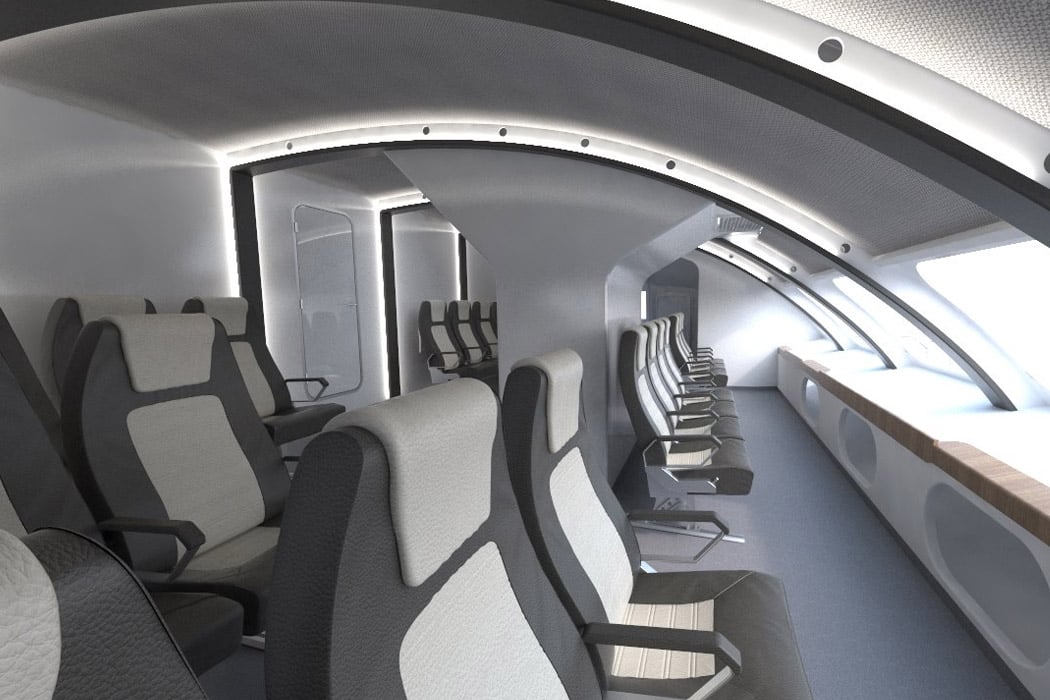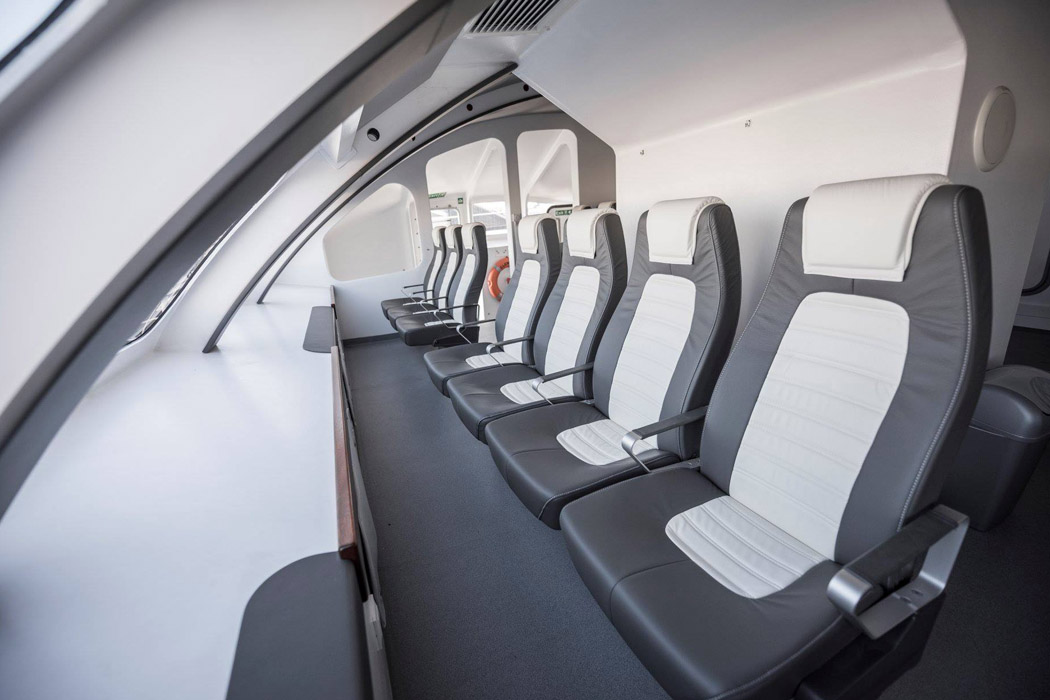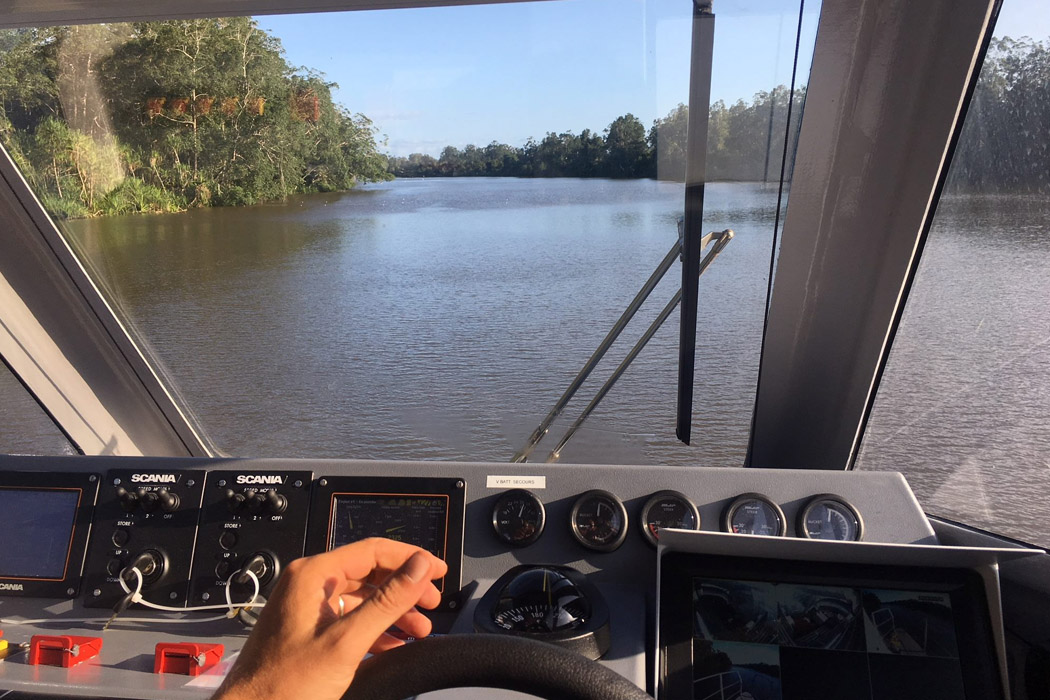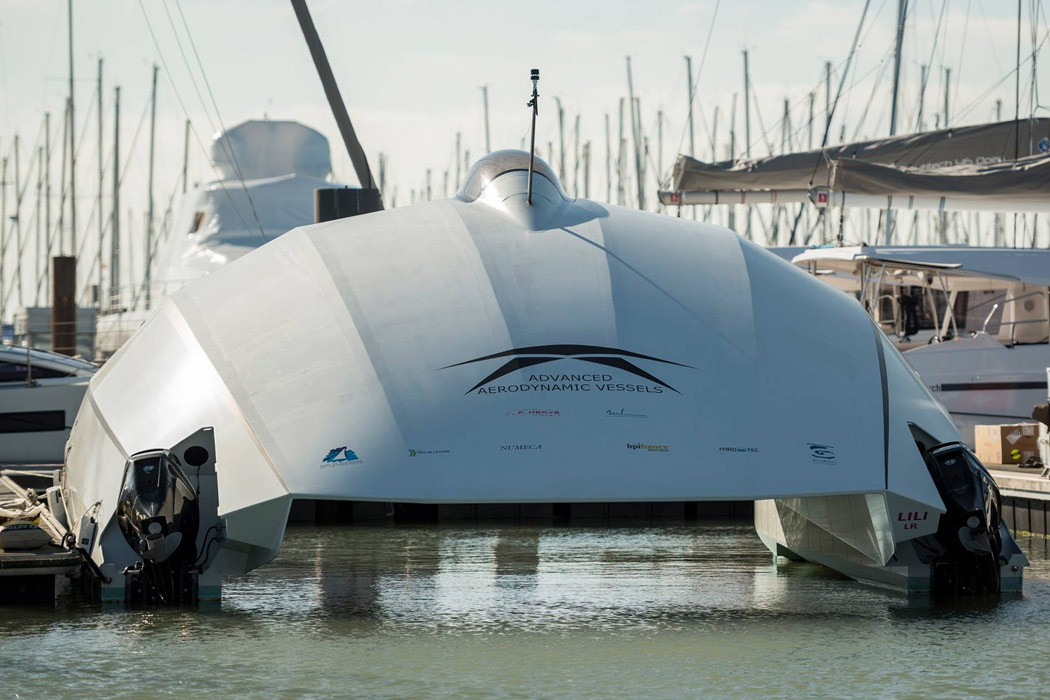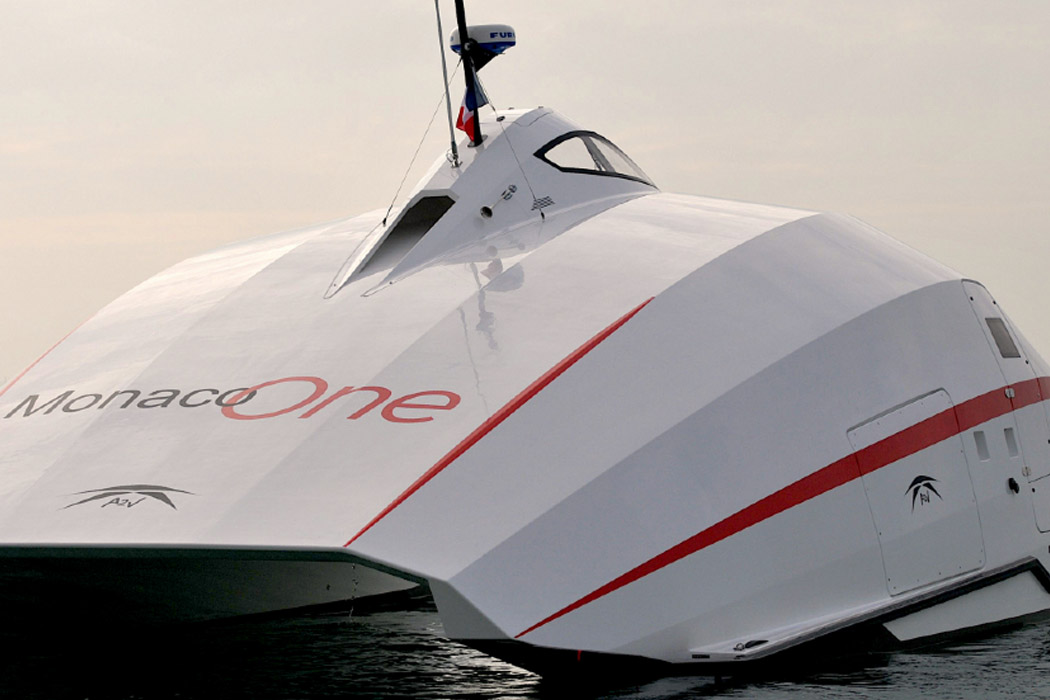French start-up A2V (Advanced Aerodynamic Vessels) recently unveiled a prototype called ‘Lili’ that has the ability to glide on water at 100 km/h. The futuristic design was involved work from Marc Lombard and the Fernand Hervé Shipyard to develop the aerodynamic lift that is the reason behind its jaw-dropping velocity and reduced fuel consumption.
Lili is designed to be super lightweight with an aerodynamic form so the more it accelerates, the less it sinks into the water therefore the less fuel it uses. In fact, it uses three times less fuel than other vessels of its kind and ten times lesser than a helicopter going the same distance, The 10-meter-long boat is constructed with 3.5 tons of plastic and fiberglass. Lili’s shape helps it shift and turn like a fish in water without tipping over. The interior features plush leather seats and large windows making it a favorite among expensive hotels that are on Lake Geneva or Gulf of Guinea. Even the principality of Monaco acquired Lili to connect the Port of Hercules with the Marina of Cala del Forte in Ventimiglia.
With reduced fuel consumption, Lili contributes to cutting down drastically on marine pollution. With this design, A2V is targetting several market segments – personnel transport (oil platforms, wind farms), coastal surveillance (customs, police, anti-piracy), passenger transport, luxury yachting, taxi boats, etc. and theoretically, if this concept is applied across the board it can truly make a big impact on reducing marine pollution. However, this innovative boat is nothing less than a luxury – it costs 1.2 million euros! Hopefully, A2V can find a way to scale down the costs so other sectors using water transport can get the eco-friendly benefits and the speed that Lili brings.
Designer: Advanced Aerodynamics Vessels
